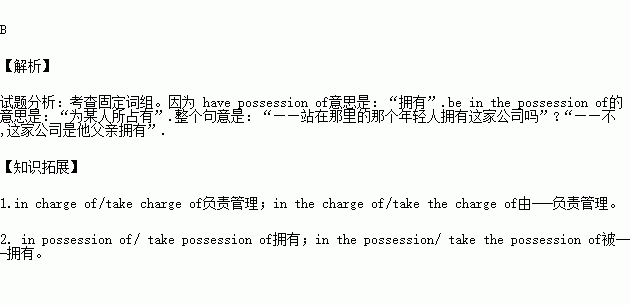题目内容
--Does the young man standing there ________ the company.
-- No, the company is _____his father.
A.in possession of; in the possession of
B.have possession of; in the possession of
C. take possession of; in possession of
D. have possession of; in possession of
练习册系列答案
相关题目

